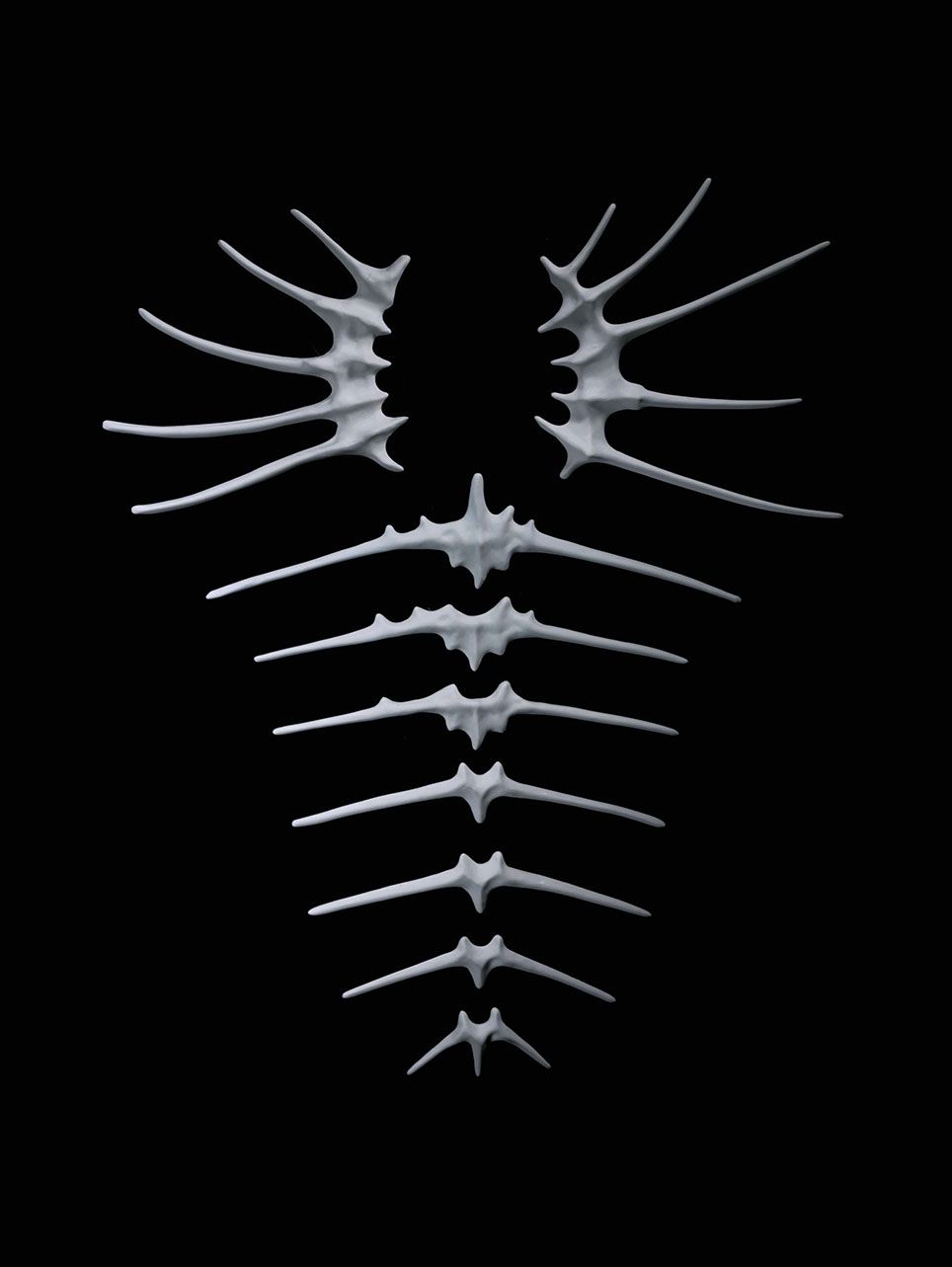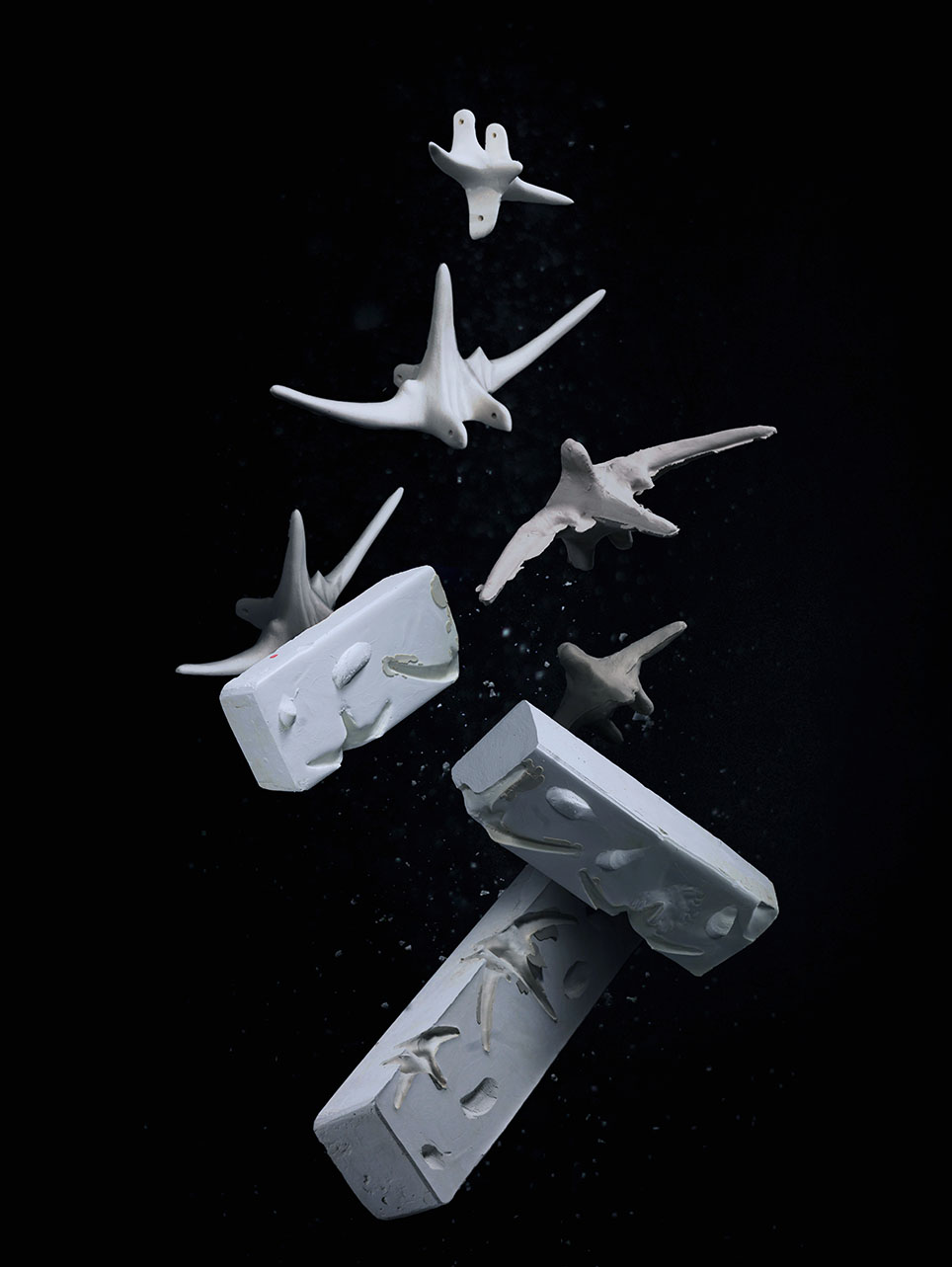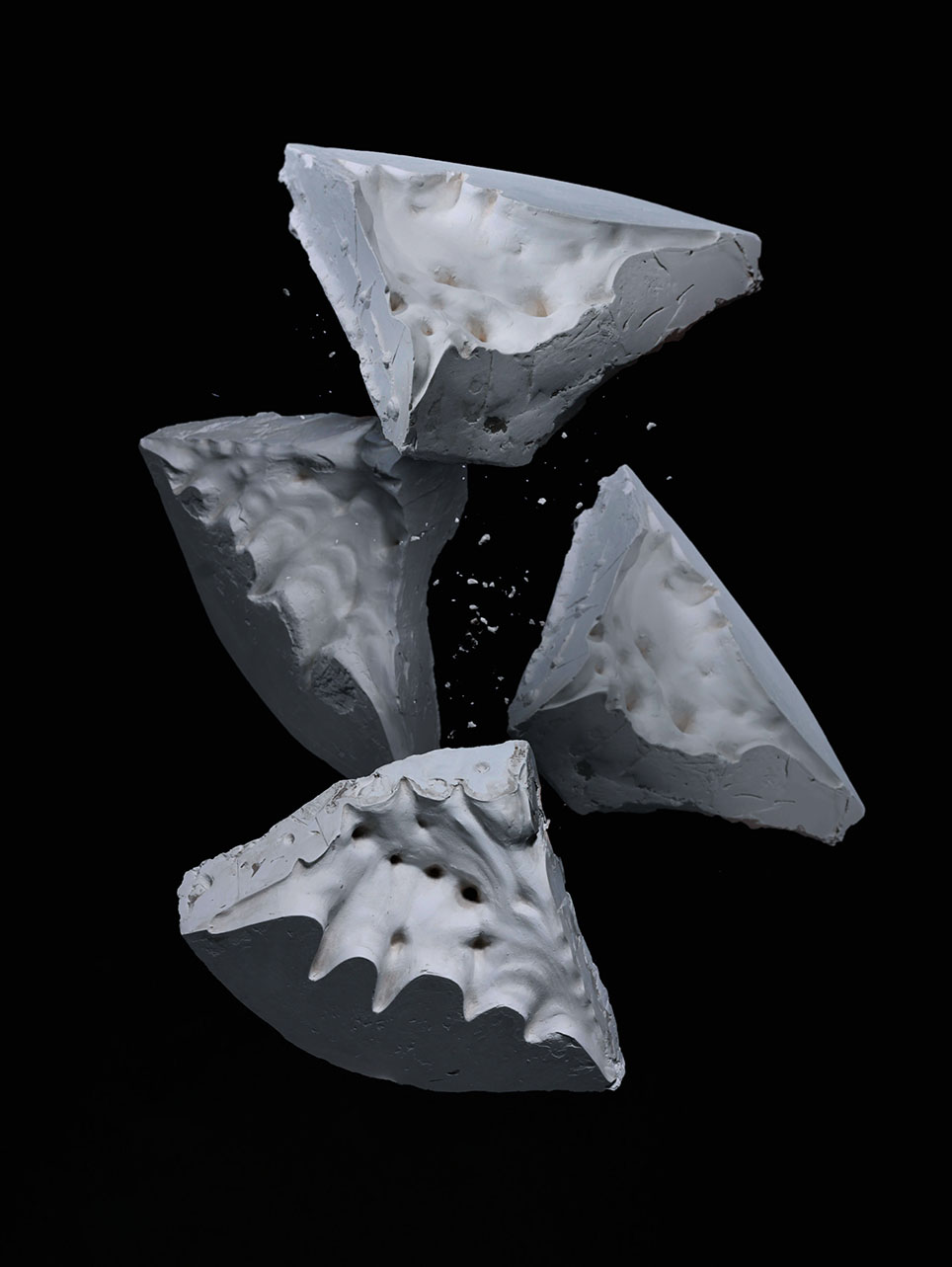PROCESS
CREATING THE BLACK CERAMIC PIECES
Following the sketches I started the trial and error-phase of creating the ceramics. I started with the most complex one, the sentimental dress, consisting of around a 100 individual ceramic pieces. Following that I moved on to the rest of the sketched pieces.
Knowing that the colour palette would be very dark I was dreaming of hues of black representing the knowledge of glazing and firing. Mattes, satin finishes, glossy surfaces, vibrant lusters and muted smoke stains. A carnival of all the diversity of black ceramics. I began my experimentation with the pit-fired ceramics. I had a location and required equipment available in Savo. In this firing I wanted to build up a very niche kind of value to the pieces and later on to the garment. I followed a similar routine as last time I arranged a pit-firing, paying attention to folklore and beliefs surrounding the plants I used as combustibles. The pieces were made out of rough raku-stoneware and sculpted by hand.
The model I have asked to assist me with this project is also Finnish and from the same place I arranged the pit firing in. This was an excellent opportunity to see if the garment gains value if there’s a piece of her home and culture embedded in the structure of the ceramics. Would it make a difference if I have fired the ceramic scales in a pit with herbs that have infused the pieces with the alleged properties?
In the following photographs I will take you through the process of pit firing, from the scenery to the bottom of the pit.










FINISHING THE BLACK PIECES
I continued with the pieces in the studio. I worked using hand-sculpted stoneware and slip-cast porcelain and testing out different black glazes. I conducted an extremely concise glaze study to find out the most beautiful glazes. The choices on the pieces are as follows: matte black ceramic slip called engobe, satin finish black glaze, glossy black glaze and to create an oil slick effect: iris lustre on top of a glossy black glaze. With these black pieces I wanted to have the wearer evaluate the appearance of the ceramics and see if it had an impact on the experience. After the pieces were fired I hand sewed the majority of them on the dress and used glue to attach the smallest bits to create a scattered effect. The needle and thread would have torn the fabric if I had tried to sew in the smallest pieces onto the delicate outer layer of the dress.

SLIP CASTING PROCESS
I started experimenting with slip porcelain and plaster moulds. I built stoneware models according to the sketches and cast them in plaster in order to make moulds of them. Using the moulds I cast the pieces in porcelain. The following pieces remained pure white to showcase the opulence of the material.

The first one was a piece inspired by crab legs, which is why I called the garment the arthropod dress. I wanted to create something very delicate and easily breakable to showcase the delicate and fragile nature of the material. I was very intrigued by the way a crab looks when it’s turned upside down and wanted to create that feeling on the piece. I cast the pieces and high fired them without any glaze and strung them together with a fishing line.


The next piece I created was the articulated armour. I wanted to have some kind of movement to the garment and the porcelain. I made three different sizes of modular pieces inspired by invertebrates that could interlock and so create a larger surface. The repetitive pattern pleases my eye and the movement provided by modularity felt like a great addition to the collection when considering the objective of the thesis. After casting the models in plaster to create moulds I cast over a hundred of these pieces and attached them on a fishing line to create the collective surface. This piece expresses the versatility and sculptural aspect of porcelain as well as the lingering feeling of fragility, but in the context of flexibility.


The last porcelain piece, the shell, represents the rigidness and hardness of the material. It also tells the quintessential tale of silicates. What I mean is that it is very heavy and rock solid. For this one I wanted it to be big and overpowering. I was inspired by conch shells and spiky crab shells and I wanted it to cover a large surface. I made a big model that would for sure cover the chest of the model and added spikes and details to that in order to create the appearance of a crustacean shell.


Might I interest you in one of the following: